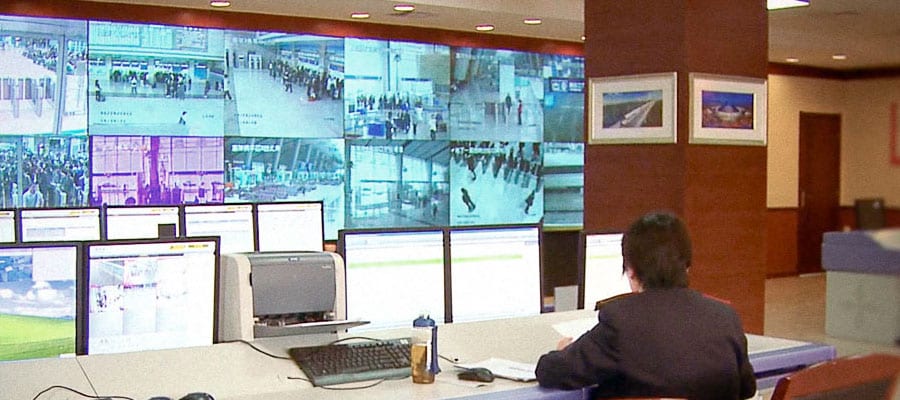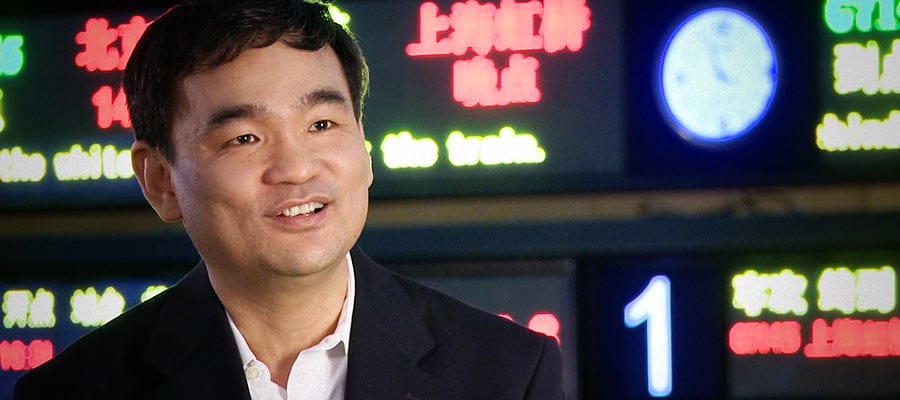Goals
- The new system required quick implementation, effective integration with current equipment and a user-friendly operator interface
- An easy and efficient upgrade path was imperative for planned future expansion
Challenges
- The Ministry of Railways needed to develop the high-speed line within 18 months
- Involved integrating multiple hardware and software vendors into a Passenger Information System
Results
- MOR is now the largest high speed rail line in the world at 8,358 km
- Integrated 60 Different 3rd Party Vendors
- Passenger Information System is installed into 220 Railway Stations, 15 High-speed Rail Lines across China
- It uses over 200,000 I/O points on 1300 Platforms
``We are collaborating with 60 different vendors for each station’s Passenger Information System. Every vendor can communicate seamlessly with each other because of AVEVA System Platform. This allows us to quickly and easily respond to our customer’s requirements.`` - Shao Xiaofeng, Vice President
Background
Beijing, China – Chinese spectators at the August 2008 Olympic games cheered their country’s athletes as they won a total of 100 medals in just 10 days. But even before the competition began, another historic record was set: the new railway connecting Beijing and Tianjin reached speeds of 350 kilometers per hour (220 miles per hour). The 120-kilometer trip (approximately 100 miles) now takes just 30 minutes, saving travelers 40 minutes each way.
These statistics have set the pace for the entire system. The China Ministry of Railways (MoR) has an aggressive plan to expand and modernize the country’s rail system with a project scheduled to extend to 2020.
Big Country, Big Job
The Ministry is responsible for passenger services, regulation of the country’s rail industry, development of the rail network and the overall rail infrastructure. In a country that encompasses over 9.5 million square kilometers (over 3.6 million square miles) and with a population of more than 1.3 billion people, this is no small task.
The China Ministry of Railways needed a rail system that could be implemented quickly and expanded efficiently as well as one that would easily integrate with China’s current infrastructure. The MoR also wanted a user-friendly interface that would make operating and managing the railways as economical as possible.
Facilities Management is Central to Success
The first stage of the project – the high-speed Beijing-to-Tianjin line – included five stations. A primary goal was to ensure that the facilities management system (FMS) would make these stations hospitable and safe for travelers.
Called the Passenger Information System, the FMS would provide an integrated and centrally-managed platform to support communications equipment, including the public address system, video displays and automated ticket sales, plus closed-circuit television monitors and other components used by supervisors to manage operations and safety systems.

First Stop: Standardization
With the Olympic deadline approaching, the government agency knew that selecting a partner with technology that could benefit the project over the long haul was critical.
The AVEVA solution was chosen because it offered the unique advantage of off-the-shelf, object-oriented software. Previous passenger service systems in China had been proprietary, and had proven to be expensive, hard to configure and difficult to maintain. But with AVEVA, the China Ministry of Railways could scale the enterprise, beginning with the Olympic line and extending it in stages to the entire train system of China as needed.
Plus, the AVEVA software-based system is open, enabling engineers to develop applications and then easily reproduce them internally, without the assistance of outside experts. Standardized objects promote repeatability and customization and save time, meaning new stations can be deployed to meet strict budgets and deadlines. In fact, stations have been configured in as little as one day. And when changes are needed, they can be made at select stations, or even rolled out across the entire system, thanks to the AVEVA application templates.

The AVEVA solution was chosen because it offered the unique advantage of off-the-shelf, object-oriented software.
The AVEVA System Platform and AVEVA InTouch HMI solution allowed the integration of 60 different third-party vendors into the station’s Passenger Information System
Integration for Centralized Management
Components came from different manufacturers and did not work together. Stations and terminals were not linked in any way. This created inefficiencies in deployment, operations and maintenance. Now the system is seeing multiple benefits from a unified management strategy, standardized technical architecture requirements and centralized operations.
For instance, because the Passenger Information System is built on the AVEVA System Platform, data connectivity is maximized, allowing railway facility operations to be unified and controlled from the central system. Plus, through the AVEVA Toolkit, third-party solutions used in conjunction with the FMS also communicate with the central application. This creates a fully integrated solution that enables all status and control instructions to be shared automatically with the different rail stations. Operators monitor and control station assets and communications equipment though this core system, which enables them to manage the comprehensive capabilities of the FMS. Managers can assign and move personnel according to demand, which has resulted in reduced operations costs. And since some of the station equipment operates automatically, the Passenger Information System is saving energy too.
Planning has also improved. The AVEVA Historian provides real-time station asset data for trending and analysis as well as more efficient and complete reporting. The AVEVA solution interfaces with third-party databases and Microsoft® Office programs such as Excel® and Word, so information can be shared readily.
AVEVA helps integrate
- 60 Different 3rd Party Vendors
- 220 Railway Stations
- 15 Highspeed Rail Lines
- Over 2,000,000 I/O points
- 1300 Platforms

The HMI provided by AVEVA InTouch is crucial.
Operators depend on it for overall visualization – whether they are working at a remote station or a central monitoring location. Train line operators use the HMI to view the status of each device, plus they receive and manage alarm information and easily apply corrections when needed.
Another important aspect of operating a large rail system is maintenance. The AVEVA solution enables the China Ministry of Railways to respond promptly to needs for repairs, but also to develop a systematic program to maintain the railway system for optimum performance and upgrades.
Destination: Success
The China Ministry of Railway’s journey to provide extensive rail transportation services has gotten off to a smooth start. By 2020, it is estimated that the AVEVA solution will help the China Ministry of Railways manage an estimated three million I/O points and connect a large part of the country.
The size of the system is just the beginning of its value. According to the MoR, return on investment is expected within six years. And no matter where you’re coming from, that’s a great victory.